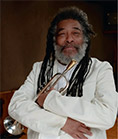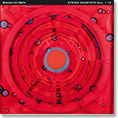THE MUSIC
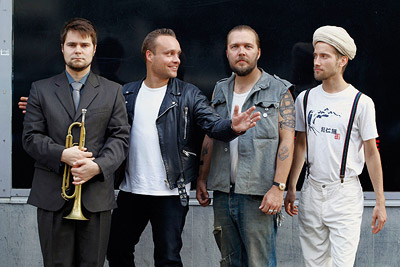
Black Motor met with Verneri for the first time in the spring of 2009. That year, we arranged a series of concerts in a small café in our hometown, Tampere, with the idea of inviting different musicians to join us on stage each month. Verneri´s sensitivity to the melody and his strong compositions immediately felt like home to us - a balancing element for our group. The recording in hand reflects a time when we were working intensively as a trio and with various guest musicians. Active living - feelings felt - can be heard. Sounds like a transition.
Hope you´ll enjoy.
Härmälä, Tampere, October 19, 2012
Simo Laihonen
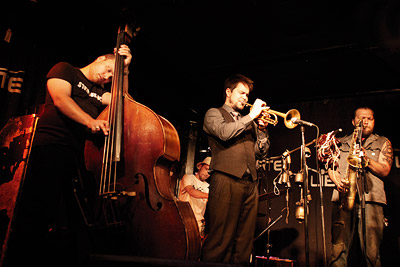
For Finnish modern jazz, Helsinki has been the
undisputed center of activity for the past half a century. Whereas in the post-World War II
excitement over newly-found access to American music and culture, jazz had become popular
among the Finnish youth all across the country and there were regional centers
where musicians played together and performed to local audiences, even formed their
own big bands, through the advent of rock ‘n´ roll, modern jazz was quickly relegated,
in Finland just like elsewhere, to its current place as a somewhat marginal art form favored
by true enthusiasts. As part of this process, Helsinki claimed its place as the center
towards which virtually all Finnish players aspiring to become professional jazz musicians
have gravitated.
Still, certain regions in Finland have had a central role in Finnish modern jazz. For example, the Kymenlaakso region produced such early champions of the music as the Pethman brothers, saxophonist Esa Pethman and drummer Anssi Pethman, from Kouvola and saxophonist Juhani Aaltonen from Inkeroinen, who already moved to Helsinki in the early 1960s, soon to be followed by saxophonist Eero Koivistoinen from Kotka. Among the current younger generation of improvising musicians, three cities outside of the Helsinki region come to mind. Firstly, Pori has produced its fair share of jazz musicians, such as saxophonists Jari Perkiönmäki and Tapani Rinne, pianist Pekka Tyni and guitarist Seppo Tyni, perhaps because of the International Pori Jazz Festival that began in 1966 and the local scene, including the Pori Big Band, that has developed around it. Secondly, Jyväskylä in Central Finland and its famous Jazz Bar have become somewhat legendary for producing talented musicians who now are among the leaders in their generation, including trumpeter Kalevi Louhivuori, pianists Kari Ikonen, Samuli Mikkonen and Joona Toivanen, guitarists Tuomo Dahlblom and Esa Onttonen, bassist Jori Huhtala and drummer Olavi Louhivuori, among many others. Thirdly, Kuopio, the capital of the Savo region in Eastern Finland, has produced a number of top young players, including saxophonists Otto Eskelinen and Pauli Lyytinen, bassist Antti Lötjönen and drummers Mika Kallio and Tatu Rönkkö. However, it is common for almost all of them that, after receiving their early musical education and first experiences of playing live in their respective home towns, they have moved to Helsinki to continue their studies and/or begin their professional careers.
Not everybody, of course, has chosen to move to Helsinki, a quaint and peaceful city that many Finns living outside of the capital still consider too hectic and stressful to live in. Already in the 1960s, percussionist Jouni Kesti in Oulu, pianist Matti "Rag" Paananen in Turku and trumpeter Jarmo Sermilä in Hämeenlinna obtained almost cult-like status, in part, by insisting on staying in their respective hometowns and continuing on their own individualistic paths in improvised music without paying much attention to the lure of the capital.
However, among the younger generation, the members of Black Motor are somewhat unique. Although saxophonist Sami Sippola comes from Pori and drummer Simo Laihonen from the Jyväskylä area, the threesome first came together in Tampere, bassist Ville Rauhala´s hometown (although he grew up in Kangasala, a small town nearby). They have also chosen to stay in their adopted hometown, an old industrial center located in the Häme region in Central Finland that is sometimes called the Manchester of Finland, and have, in the past eight years or so, almost singlehandedly created there a local scene of their own. Strangely enough, before Black Motor, local improvisation groups have been somewhat scarce in Tampere although it has been the host of one of the best European festivals for improvised music, the Tampere Jazz Happening, for more than three decades and the origins of the festival go even further back, to the 1970s, when a small group of jazz enthusiasts started organizing concerts and bringing some of the leading names in improvised music to Tampere.
Still, the local jazz enthusiasts seem to have had
only limited impact on the live music scene, with Tampere being better known as the birth
place of "Manserock", Finnish language punk and rock music of the 1970s and 1980s,
with groups from the Tampere area, such as Juice Leskinen and Coitus Int, Eppu
Normaali, Popeda and Virtanen, having a huge impact on the Finnish popular music
culture. There have certainly been important figures for Finnish improvised music who
live in Tampere, such as drummer Ippe Kätkä, who has always straddled the boundaries
between jazz and rock, and percussionist Janne Tuomi, who is comfortable both in
the worlds of classical avantgarde and improvised music, but they have represented more
isolated instances.
Black Motor and a few other like-minded musicians have changed that. By bringing in visiting musicians for their club nights and mini-festivals, starting with guitarist Jukka Orma and followed by trumpeter Verneri Pohjola, guitarist Raoul Björkenheim, saxophonist Jorma Tapio and pianist Samuli Mikkonen, among many others, Black Motor has brought improvised music to the local audience in Tampere outside of the confines of the Tampere Jazz Happening in a manner that is unique. They have also often joined forces with musicians active on the modern folk and alternative rock scenes. But not only this, Black Motor has also been active in the broader community, frequently performing in schools and other institutions as well as teaching and leading workshops. All of these activities have contributed to a fertile growing ground for creative music in Tampere.
In keeping with its industrial traditions, Tampere has also always been known as a center of the labor and socialist movements in Finland going back to the late 19th and early 20th centuries. Therefore, it is perhaps appropriate that there is something decidedly proletarian in the approach that the members of Black Motor take to their music and music making. Firstly, Black Motor is a true collective. The members of Black Motor prefer not to talk about their own individual backgrounds, but rather want to focus on the group and its activities. They have also chosen not to pursue academic degrees, which are now so prevalent even among younger improvising musicians in Finland and elsewhere. No Master of This or Doctor of That for these three gentlemen. In fact, when not working with his music, saxophonist Sami Sippola, for example, can sometimes be found at a local flea market peddling abandoned bicycles that he repairs for sale.
It is also somewhat difficult to imagine the members of Black Motor spending a lot of time writing grant applications and complaining about the lack of support for their music making. Instead, they choose to work. Not only playing improvised music, which is closest to their heart, but also other forms of music as well as participating in cross-cultural ventures with dancers, theatre and film makers, and even contemporary circus. They hustle. Their belief in the power of their own music is so strong that it seems unstoppable. Who cares whether they are invited to play at major jazz festivals, they simply create their own performance opportunities. Who cares whether major record labels are after them, they simply release their music relying on small independent labels. Who cares whether their names appear in the polls, they know their own worth. And wouldn´t you know it, after almost a decade of hard work, they are now among nearly everybody´s favorite groups in Finland and are getting those invitations and receiving that attention, but are totally unchanged by it. In the next month alone, they will not only perform - again - at the Tampere Jazz Happening, but also at the London Jazz Festival.
Trumpeter Verneri Pohjola was one of the first guest artists that Black Motor featured at their club nights in Tampere and he continues to play with the group occasionally when schedules permit. Although Pohjola can be seen as a member of the Helsinki establishment in Finnish modern jazz given his many successes, this collaboration was particularly appropriate since Pohjola, just like the members of Black Motor, has always steadfastly believed in his own vision of improvised music. He is also truly suitable as a guest artist for Black Motor in that both Pohjola and the members of Black Motor are, despite the free jazz influences from Albert Ayler to Peter Brötzmann and beyond that Black Motor displayed particularly early on, first and foremost great lovers of the melody as shown on Rubidium as well as on their past recordings.
On Rubidium, Pohjola and Black Motor also display their love of the Slavic music culture by performing two Russian compositions. In a way, both the presence of these Russian compositions and the inclusion of an Edward Vesala composition, "Kynnyspuulla", can be seen as part of the same. Both Pohjola´s first group, Ilmiliekki Quartet, and Black Motor counted Vesala among their early influences and, if anything, Vesala was always a purveyor of strong, often melancholic melodies in keeping with the Finnish national ethos, which certainly shares more of an affinity with Finland´s Eastern rather than Western neighbors. Add to that Verneri Pohjola´s and Ville Rauhala´s original compositions that seem to come from the same place and even the fireworks on "Sax-O-Phun" and you have a set of compositions that is perfect for this collaboration.
This is a pairing that needed to happen and needs to be heard.
Helsinki, October 25, 2012
Petri Haussila
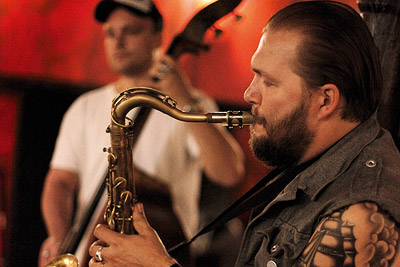
Waltz (unknown) is a composition that saxophonist Sami Sippola found on a compilation of Russian recordings called "Tolko dlya vas" (Only For You) as performed by trumpeter, conductor and composer Yakov Skomorovsky (1889-1955) and his orchestra in 1937. In addition to his work in the fields of theatre and classical music, Skomorovsky was the founder of one of the first jazz orchestras in Leningrad in the 1920s, the musical director of Leonid Utiosov´s Tea-jazz Orchestra beginning in 1928 and as the leader of his concert jazz orchestra in the 1930s and 1940s. On the compilation that Sippola came upon, the composition is simply titled "Waltz" and attributed to an unknown composer. No more information appears to be available on the origins of the composition.
Song of India (Nikolai Rimsky-Korsakov) was composed by the Russian composer Nikolai Rimsky-Korsakov (1844-1908) for his opera "Sadko" in 1896 and originally known by its full title "Song of the Indian Guest". Trumpeter Bix Beiderbecke recorded the song already in 1929, but it was popularized by trombonist Tommy Dorsey, who recorded it with his big band a number of times beginning in the late 1930s. "Song of India" has also been recorded by other big bands, such as those led by Billy May, Ted Heath, Jimmy Dorsey, Gene Krupa and Sy Oliver, as well as many smaller jazz ensembles. The members of Black Motor were originally inspired by a version of the composition - found by the group´s flea market specialist Sami Sippola - by Korla Pandit, an African-American organist by the name of John Roland Redd (1921-1998) who, in the late 1930s, began performing as Juan Rolando and then, in the 1940s, reinvented himself as Korla Pandit, an exotic figure said to be born in New Delhi to an Indian Brahmin priest and a French opera singer and travelled to the United States via England. As Korla Pandit, he became a popular early TV personality and was famous for wearing a turban while wordlessly playing his Hammond B-3 organ and wistfully staring into the camera. He also had a successful career as a theatre organist and recording artist.
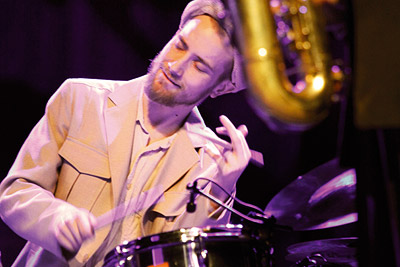
Vainila (Ville Rauhala) is Ville Rauhala´s composition which, on this recording, finds its third incarnation in the Black Motor repertoire. The piece was originally written as an up-tempo composition called "Ella Mi Fu Rapita" and played at early gigs of the band. On their Vaarat Vastukset album, its name was changed together with its mood. In joint performances by Verneri Pohjola and Black Motor, "Vainila" has preceded by another Rauhala composition, "Alma", with the two pieces being played together as a two-part suite.
Alma (Ville Rauhala) is a song for composer Ville Rauhala´s yet unborn daughter. "Alma" was created with lyrics that its composer has sung on occasion in concert performances of the song.
Rubidium (Verneri Pohjola) is a rare highly reactive, soft and silvery-white metal first discovered in 1961 and named after the bright red lines in its emission spectrum. When brought to contact with water, it starts to burn. Here, it is Black Motor that brings Verneri Pohjola´s composition to burn. "Rubidium" was originally composed in 2009 for a short-lived version of Verneri Pohjola´s Aurora ensemble that included Pohjola, saxophonist/flutist Juhani Aaltonen, bassist Ulf Krokfors and drummer Joonas Riippa.
Old Papa´s Blues (Verneri Pohjola) is not an ordinary blues. Actually, despite its name, it is not really a blues at all. The song is dedicated by Verneri Pohjola to his late father, bassist and composer Pekka Pohjola, and follows a family tradition in that Pekka Pohjola once composed a tune for Verneri Pohjola, "Verneri´s Blues", that also was not a blues at all. "Old Papa´s Blues" was first recorded by Verneri Pohjola with the Olavi Trio in 2008 (Olavi Trio & Friends: Triologia, TUM CD 026)
Sax-O-Phun (Rudy Wiedoeft) was picked up by Black Motor from saxophonist Josef Kaartinen´s recording Master of Saxophone that was made in 1987, when Kaartinen was 82 years of age. The composer, Rudy Wiedoeft (1893-1940), was a saxophonist active particularly in the 1910s and 1920s, when he recorded with groups such as the Frisco Jazz Band, Happy Six, Green Brothers Jazz Band, Jazzpo´s Carolina Serenaders and Tennessee Ten. In the 1930s, Wiedoeft worked in Rudy Vallee´s orchestra and then lived for a while in France. In addition to "Sax-O-Phun", a number of his other compositions, such as "Valse Erica", "Valse Llwellyn", "Saxema" and "Saxophobia", were also hits in their day. Josef Kaartinen (1905-92) was a Finnish saxophonist famous both as a virtuoso on light classical compositions and for his role in various popular music orchestras. He is known to have played his "laughing saxophone", perhaps on "Sax-O-Phun", already in the 1920s, when he was a member of the Jambo orchestra performing at the Palladium and other Helsinki restaurants. In 1929, Kaartinen won the world championship in saxophone playing in Sydney, Australia, besting almost 600 saxophonists from around the world who traveled to Sydney to participate in the competition. After living in Australia and New Zealand for a decade or so, Kaartinen returned to Finland to fight in the Finnish Winter War in 1939 and later performed with Kullervo Linna´s Humppa-Veikot, among others.
Kynnyspuulla (On the Threshold) (Edward Vesala) is a composition by the Finnish composer and drummer Edward Vesala (1945-1999). It was originally included on the recording Neitsytmatka in 1979 with lyrics written by Iro Haarla and vocals performed by Pepe Willberg. The original recording also featured trumpeter Tomasz Stanko and saxophonists Juhani Aaltonen and Tomasz Szukalski, all frequent collaborators with Vesala in the 1970s and the 1980s.
The Last Janitsar (Viimeinen Janitsaari) (Verneri Pohjola) was originally inspired by the playing of two master drummers, Max Roach and Edward Vesala. Pohjola conceived the composition as a fictional concerto for them. "The Last Janitsar" was composed in 2009 for Pohjola´s Aurora ensemble with Aaltonen, Krokfors and Riippa .

